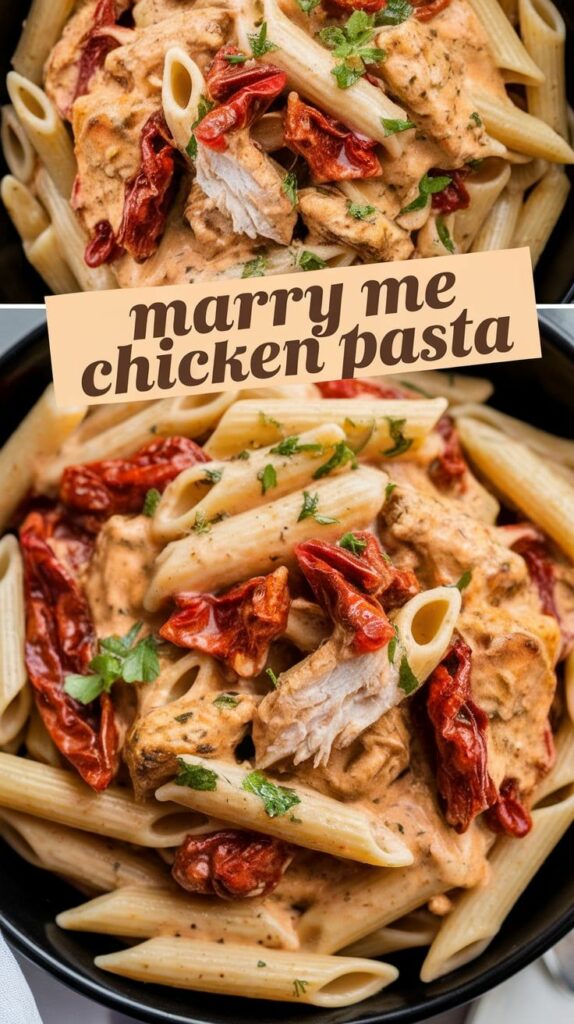Spring has arrived, and with it comes an incredible opportunity to create a delicious chicken stir fry that transforms weeknight dinner into a culinary adventure. My recipe blends tender chicken with vibrant spring vegetables, delivering a healthy dinner recipe packed with flavor and nutrition.
This chicken stir fry isn’t just another meal—it’s a quick, nutritious solution for busy families seeking restaurant-quality dishes at home. By combining lean protein with seasonal vegetables, I’ve crafted a recipe that’s both satisfying and simple to prepare.
Imagine crisp snap peas, tender asparagus, and bright carrots sizzling alongside perfectly seasoned chicken in a savory sauce. The result? A colorful, nutrient-rich meal that comes together in less than 30 minutes and will have everyone asking for seconds.
Whether you’re a kitchen novice or an experienced home cook, this spring vegetable stir fry will become your new favorite weeknight dinner. Get ready to discover a recipe that’s as delightful to make as it is to eat!

Why This Spring Stir Fry Will Become Your Go-To Meal
Discovering the perfect weeknight dinner can be a challenge, but my chicken and spring vegetable stir fry is about to change your meal prep game. This recipe isn’t just another dinner option – it’s a game-changing approach to healthy cooking methods that will transform how you think about quick and nutritious meals.
Health Benefits of Stir-Frying
Stir frying offers remarkable benefits for health-conscious home cooks. The quick cooking method preserves more nutrients in vegetables compared to traditional cooking techniques. By using high heat and minimal oil, you’ll lock in essential vitamins and minerals that might otherwise be lost during lengthy cooking processes.
- Retains up to 90% of vegetable nutrients
- Requires minimal added fat
- Cooks food rapidly, maintaining texture and flavor
Time-Saving Advantages
Quick meal prep is the heart of stir fry cooking. Most stir fry recipes can be completed in under 20 minutes, making them perfect for busy weeknights. You’ll spend less time in the kitchen and more time enjoying a delicious, nutritious meal with your family.
Versatility for Meal Planning
What makes this stir fry truly special is its incredible adaptability. You can easily swap proteins, adjust vegetable selections, or modify seasonings to match your dietary preferences or pantry ingredients. Whether you’re cooking for a family, meal prepping for the week, or looking to experiment with new flavors, this recipe provides endless possibilities.
- Easily swap chicken for tofu, beef, or shrimp
- Customize with seasonal vegetables
- Adjust spice levels to suit your taste
Essential Ingredients for the Perfect Chicken and Spring Vegetable Stir Fry Recipe
Creating an amazing stir fry starts with selecting the right stir fry ingredients. I’ll walk you through the key components that will transform your chicken and spring vegetables into a delicious meal that bursts with flavor and nutrition.
For the chicken for stir fry, I recommend using boneless, skinless chicken breast. Cut the chicken into bite-sized pieces to ensure quick and even cooking. The protein provides a solid foundation for your dish.
- Protein Selection:
- Boneless, skinless chicken breast (1 pound)
- Cut into 1-inch cubes
Spring vegetables for stir fry add vibrant color and incredible texture. I love using a mix of seasonal produce that brings both crunch and nutrition to the plate.
- Spring Vegetable Lineup:
- Asparagus (1 bunch, chopped)
- Sugar snap peas (1 cup)
- Baby carrots (1/2 cup, sliced)
- Red bell pepper (1, diced)
Aromatics and seasonings elevate the entire dish. Fresh garlic, ginger, and a few key sauces will transform your stir fry from ordinary to extraordinary.
- Flavor Enhancers:
- Minced garlic (3 cloves)
- Fresh ginger (1 tablespoon, grated)
- Soy sauce
- Sesame oil
- Rice vinegar
By carefully selecting each ingredient, you’ll create a stir fry that’s not just a meal, but a culinary experience that celebrates fresh, seasonal flavors.
Kitchen Tools and Equipment You’ll Need
Preparing the perfect stir fry requires the right stir fry equipment and kitchen tools. I’ll guide you through selecting the best tools to make your cooking experience smooth and enjoyable.
Wok vs. Regular Pan: Choosing Your Cooking Surface
When it comes to wok for stir fry, you have two primary options. A traditional carbon steel wok offers superior heat distribution and classic cooking performance. A regular non-stick pan can work well for home cooks with limited kitchen space.
- Carbon Steel Wok: Authentic, high heat retention
- Non-Stick Pan: Easy to clean, versatile
- Cast Iron Skillet: Excellent heat distribution
Essential Kitchen Tools for Stir Fry
My recommended kitchen tools for stir fry will help you create restaurant-quality meals at home. Let’s explore the must-have utensils that make stir-frying a breeze.
| Tool | Purpose | Recommended Material |
|---|---|---|
| Spatula | Flipping and moving ingredients | Wooden or heat-resistant silicone |
| Tongs | Handling meats and vegetables | Stainless steel with silicone tips |
| Sharp Knife | Precise ingredient preparation | High-carbon stainless steel |
Prep Bowl Recommendations
Organizing ingredients is crucial for successful stir-frying. I recommend using a set of nested prep bowls to keep your ingredients measured, chopped, and ready to cook. Ceramic or stainless steel bowls work best for mise en place.
- Small bowls for individual ingredients
- Medium bowls for mixed components
- Large bowl for final mixing
Preparing Your Ingredients for Maximum Flavor
When it comes to creating a delicious stir fry, the prep for stir fry is just as crucial as the cooking process itself. I’ll walk you through the essential steps to ensure your chicken and spring vegetables are perfectly prepared.
Cutting vegetables for stir fry requires precision and attention to detail. I recommend using a sharp chef’s knife and cutting board to create uniform pieces. This ensures even cooking and an attractive presentation.
- Select fresh, crisp spring vegetables
- Wash vegetables thoroughly
- Cut vegetables into similar-sized pieces
- Aim for bite-sized chunks about 1-inch in size
Marinating chicken for stir fry is a game-changer for flavor and tenderness. I’ve developed a simple marinade that transforms ordinary chicken into a restaurant-quality protein.
| Ingredient | Quantity | Purpose |
|---|---|---|
| Soy Sauce | 2 tablespoons | Adds umami flavor |
| Cornstarch | 1 tablespoon | Helps create crispy exterior |
| Minced Garlic | 2 cloves | Provides aromatic depth |
Pro tip: Let the chicken marinate for at least 15-20 minutes before cooking. This allows the flavors to penetrate the meat and ensures a more delicious final dish.
Remember, the key to an exceptional stir fry is taking your time during preparation. Properly cut vegetables and well-marinated chicken will elevate your meal from good to extraordinary.
Master Sauce Recipe for Authentic Asian Taste
Creating the perfect stir fry sauce recipe is the secret to transforming an ordinary meal into an extraordinary culinary experience. My homemade stir fry sauce brings restaurant-quality flavors right to your kitchen, capturing the essence of authentic Asian stir fry sauce with just a few simple ingredients.
Sauce Ingredients Breakdown
The magic of a great Asian stir fry sauce lies in balancing key flavors. Here are the essential components:
- Soy sauce (for umami depth)
- Rice vinegar (for tangy brightness)
- Sesame oil (for nutty undertones)
- Honey or brown sugar (for subtle sweetness)
- Minced garlic (for aromatic punch)
- Fresh ginger (for warm, spicy notes)
Customization Options
Every home chef can personalize their homemade stir fry sauce. Want more heat? Add a splash of sriracha or chili oil. Prefer a sweeter profile? Increase the honey. Seeking a richer flavor? A tablespoon of oyster sauce works wonders.
Storage Tips
I recommend storing your stir fry sauce in an airtight glass container in the refrigerator. It will keep fresh for up to one week, allowing you to prep ahead and simplify weeknight cooking. Pro tip: Give the sauce a quick shake before using to remix any settled ingredients.
Step-by-Step Cooking Instructions
Mastering how to stir fry is an art that requires precision and technique. I’ll guide you through the perfect cooking process for this delicious Chicken and Spring Vegetable Stir Fry.
- Prepare Your Workspace
- Heat a wok or large skillet over high heat
- Add 2 tablespoons of cooking oil
- Ensure all ingredients are chopped and ready
- Cook the Chicken
- Season chicken pieces with salt and pepper
- Stir fry techniques require constant movement
- Cook chicken for 3-4 minutes until golden brown
- Remove chicken and set aside
- Vegetable Stir Frying
- Add more oil if needed
- Start with harder vegetables like carrots
- Add tender vegetables like snap peas last
- Stir fry for 2-3 minutes
- Final Combination
- Return chicken to the pan
- Pour prepared sauce over ingredients
- Stir quickly to coat evenly
- Cook for additional 1-2 minutes
Cooking stir fry is all about high heat and quick cooking. Watch your ingredients closely to prevent overcooking and maintain crisp textures.
Pro tip: Keep ingredients moving constantly in the pan to ensure even cooking and prevent burning. The key to perfect stir fry is maintaining high heat and quick, continuous motion.
Tips for Achieving Restaurant-Quality Results
Transforming your home-cooked stir fry into a restaurant-style masterpiece requires some professional stir fry techniques. I’ll share insider secrets that will elevate your cooking from basic to extraordinary, helping you create dishes that look and taste like they came straight from a professional kitchen.
Mastering stir fry tips is about understanding the nuanced art of cooking at high temperatures while maintaining perfect control. The right approach can turn an ordinary meal into a culinary experience that will impress your family and friends.
Temperature Control Techniques
Professional chefs know that heat management is crucial in stir frying. I recommend using these key strategies:
- Preheat your wok or pan until it’s smoking hot
- Use high heat but move ingredients quickly to prevent burning
- Create different heat zones in your cooking surface
Timing Secrets
Stir fry timing can make or break your dish. Here’s a quick guide to help you nail the perfect cooking sequence:
| Ingredient Type | Cooking Time | Order of Addition |
|---|---|---|
| Proteins | 2-3 minutes | First |
| Hard Vegetables | 3-4 minutes | Second |
| Soft Vegetables | 1-2 minutes | Last |
Professional Plating Methods
Restaurant-style stir fry isn’t just about taste—presentation matters too. Use these plating techniques to create visually stunning dishes:
- Choose white or neutral-colored plates to make colors pop
- Use height and layering for visual interest
- Garnish with fresh herbs or sesame seeds
- Wipe plate edges clean for a crisp appearance
By implementing these professional stir fry techniques, you’ll transform your home cooking into a gourmet experience that rivals any restaurant dish.
Serving Suggestions and Complementary Sides
When it comes to serving my chicken and spring vegetable stir fry, I love exploring creative stir fry sides that elevate the entire dining experience. Steamed jasmine rice makes an incredible base, absorbing all the delicious sauce while providing a perfect texture contrast. For those seeking alternative stir fry meal ideas, quinoa or brown rice can be fantastic substitutes that add extra nutritional value.
My favorite complementary sides include a crisp Asian-inspired cucumber salad or quick-pickled vegetables that provide a refreshing counterpoint to the warm stir fry. I recommend selecting light, crunchy accompaniments that won’t overpower the main dish’s delicate flavors. Edamame or a small seaweed salad can also serve as excellent what to serve with stir fry options that keep the meal feeling authentic and balanced.
For a complete dining experience, consider preparing a light miso soup as a starter or a simple green tea to accompany the meal. Presentation matters too – I suggest serving family-style in a large, colorful ceramic dish that allows everyone to help themselves. This approach makes the meal interactive and encourages sharing, transforming a simple stir fry into a memorable culinary moment.
If you’re looking to expand your Asian-inspired menu, think about adding a light dessert like mango sorbet or green tea ice cream. These options provide a sweet conclusion without feeling heavy after a vibrant, vegetable-packed stir fry. Remember, the key is creating a harmonious meal that delights all your senses.



